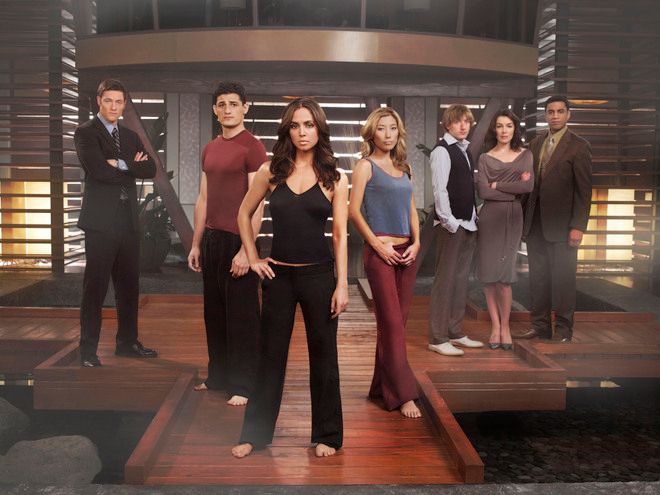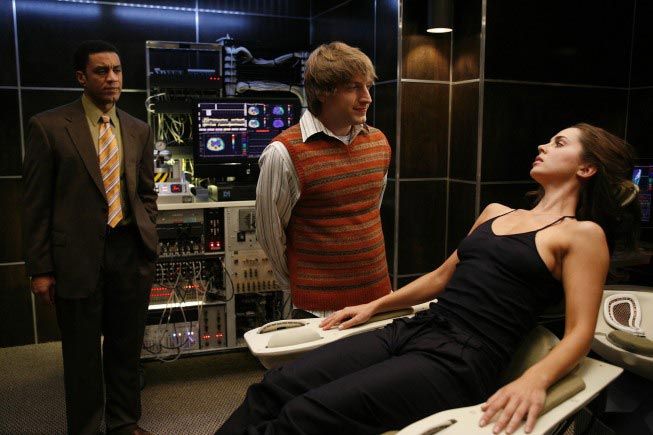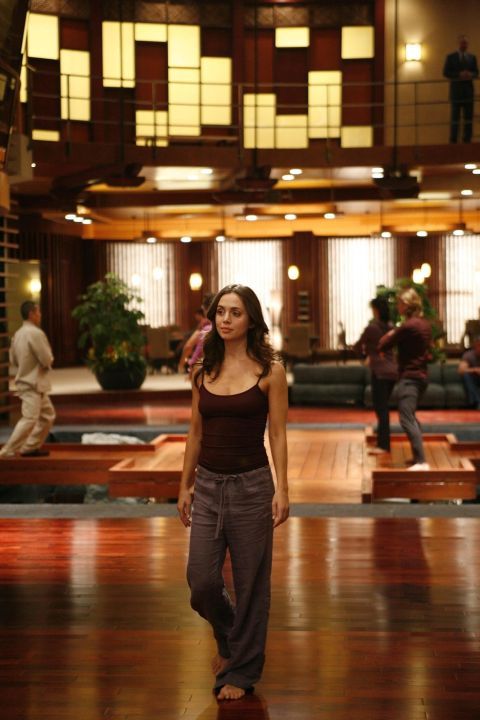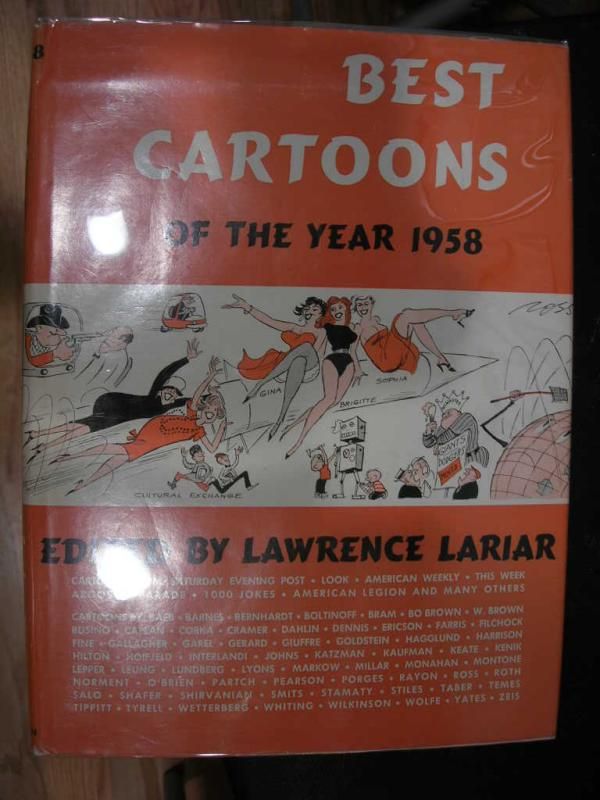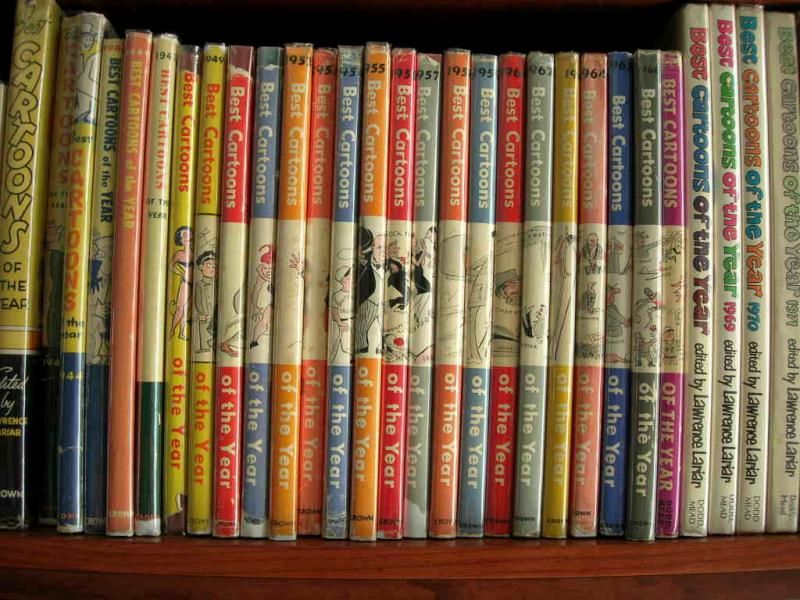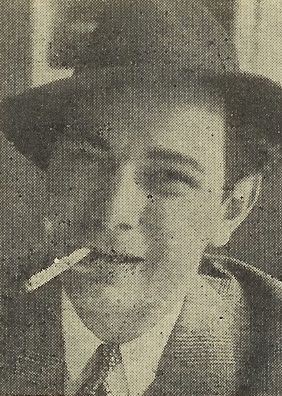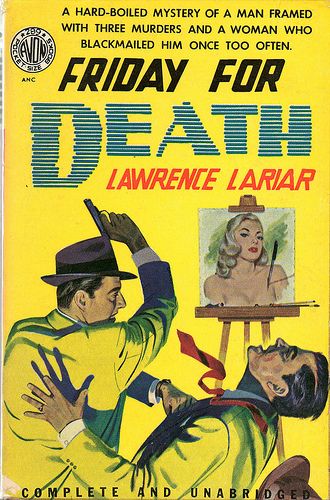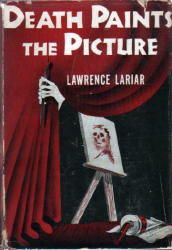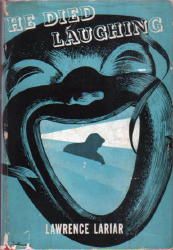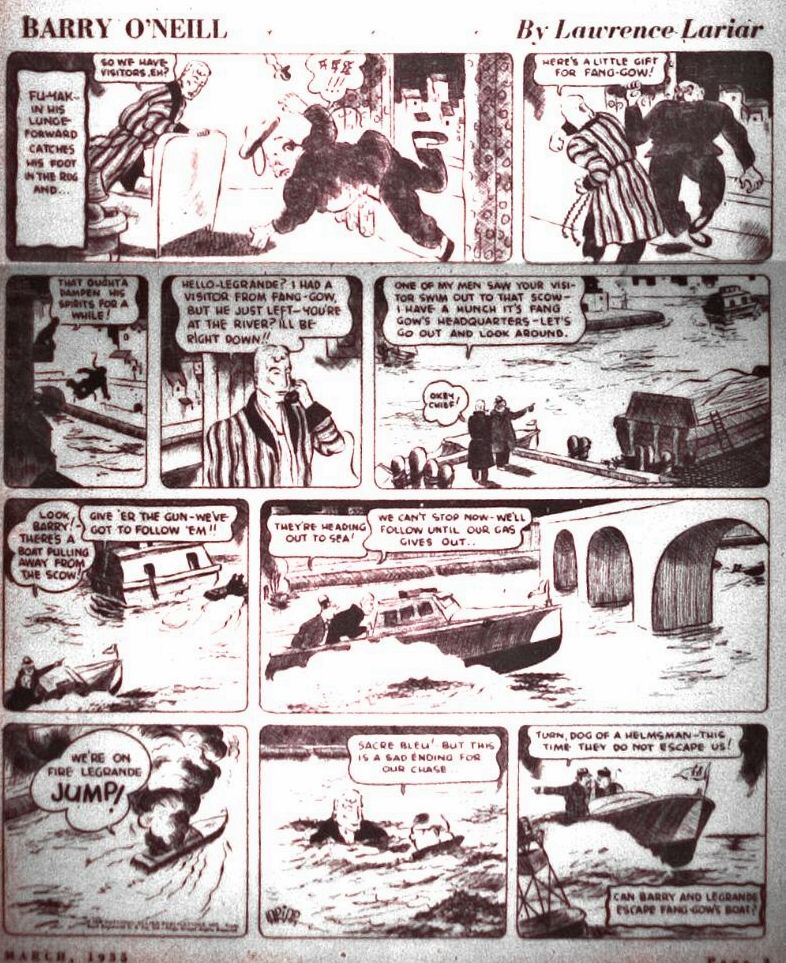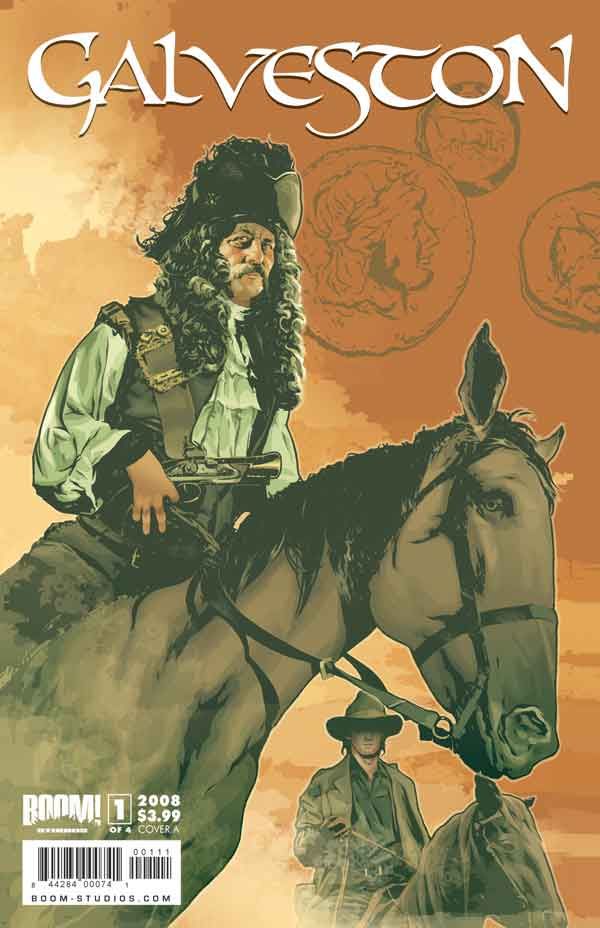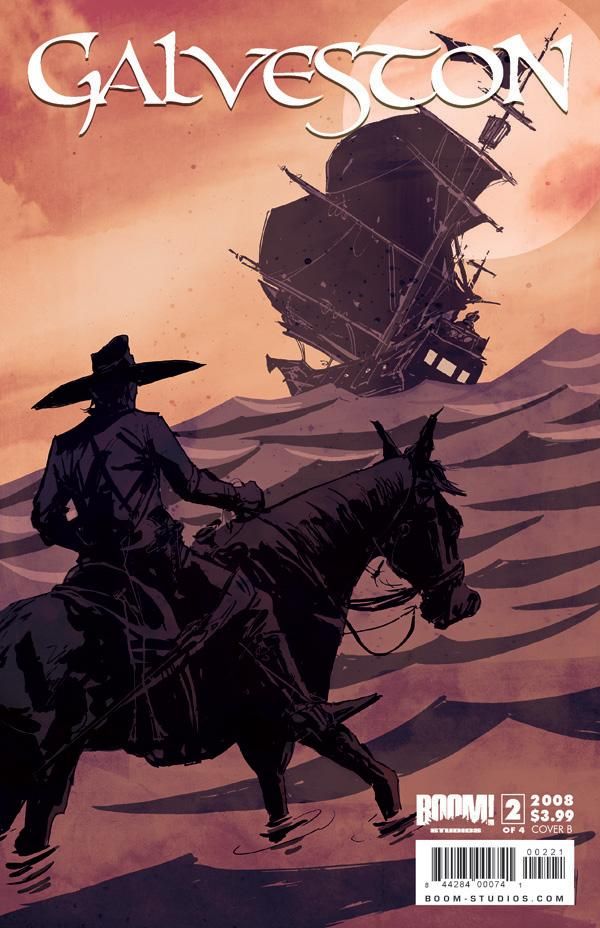Once again I find myself with several smaller items that, in and of themselves, do not really constitute a full column's worth of stuff. So here they all are together in another grab-bag effort. Some television thoughts, a bit of antiquarian book lore, and, oh yeah, comics.
*
Dollhouse: You know, it's almost funny, in a sad way, to watch the review sites and the blogosphere trying to find a way to review this show that won't kill it. It's a bit like watching everyone at a party trying desperately to avoid telling a sweet-natured guy, beloved by all, some sort of horrible ugly truth about himself. Even though everyone but the sweet guy already knows, no one wants to be the the one to break his heart.
By all reports Joss Whedon is a sweet guy and an amazingly talented writer. But the ugly truth is... his new show Dollhouse is not very good. At least the pilot wasn't. (Spoilers follow, if you are concerned about that.)
All the reviews I've seen are tepid things like "finding its feet" or "we'll give it another couple of weeks" or whatever, and I am certain this is a manifestation of loyalty to Joss Whedon himself, who's become a beloved brand name in nerd circles. I haven't seen this much tiptoeing around the word "sucks" from the fan press since Star Trek: The Next Generation's first season.
But the bottom line is that the Dollhouse pilot -- the one that, incidentally, was completely reshot from the ground up when Whedon decided the original one wasn't working -- honestly is out-and-out sucky. Unfortunately, the flaws aren't really in the acting or the dialogue or even this particular episode's plot. The flaw's in the premise. This is just not a good idea for a television series.
If by some miracle you are reading a site like this and yet you don't know what the show's about, I'll sketch it for you. The Dollhouse is a secret, illegal facility that supplies people with their personalities programmed-to-order for various millionaire clients.... essentially whoring the programmed people out. The people these invented personalities are imprinted onto are called Actives, and the series follows a particular Active code-named Echo, who's played by Eliza Dushku.
The conceit is that each week Echo will become a different personality and that personality will have an adventure, while each episode also advances the subplots regarding who Echo really was before she joined the Dollhouse, and the efforts of an obsessed FBI agent to prove the Dollhouse exists and shut it down.
This is so screwed-up as a series premise that I almost don't know where to start.
First of all, it's set up in such a way that the only way any of this will work is if we buy into not one, but several, completely unbelievable propositions.
One: that millionaires will pay for a pre-programmed substitute personality rather than just hire a real one. I mean, they're millionaires, right? Why hire a guy to forge something you can just as easily get for real (and probably cheaper, as hinted in the pilot)? For example, in this episode, Echo is programmed as a hostage negotiator in order to save the kidnapped daughter of a 'valued client.'
So we are expected to believe that the valued client, instead of calling the cops, or even a real expert from a high-priced K&R firm, instead calls his high-tech pimp and tells him to program one of the girls to be a negotiator. There's even a throwaway line of dialogue about this illogical turn of events, as though Whedon is acknowledging how dumb it is but begging us to just go with it anyway. If you have to beg for us to buy the premise, doesn't that imply the premise itself is deeply flawed?
Two: it defies all logic that a facility this big and complex, apparently staffed with dozens if not hundreds of people all walking around the giant facility where the Actives are stored in sleeper units, could still somehow evade detection by an FBI agent obsessed with discovering them.
The Dollhouse is shown to have a full medical staff, administrative staff, security squad... and all are portrayed as brilliant, competent people. Which incidentally leads me to Dumb Premise Idea Number Three: except for the ex-cop running their security, who's shown to be somewhat wavering in his convictions, everyone else seems to be fine with working illegally as support for high-priced brainwashed prostitutes. That doesn't make sense to me on any level to begin with -- you're a brilliant neurological support technician, or a crack security squad leader, and an illegal pimp job is the best you can do? -- but when you add to that the idea that an obsessed FBI guy couldn't track down one of them and make them give up the Dollhouse.... come on, that's just ridiculous.
And again, there's a snippet of dialogue designed to provide a fig leaf for this when the ex-cop says, "I thought we were supposed to be helping people." Another red flag that Whedon knows this employee loyalty doesn't make sense but nevertheless is asking us to play along (or there's no show.)
Joss Whedon is a good enough writer to know these are flaws and try to cover them. However, he's not good enough at covering them to make all this work. No one could be.
That's a lot of stuff to work at getting over in the first twenty minutes of a pilot episode, and you really have to work at it. Sorry, but you shouldn't have to spend that much time muttering to yourself, "Just go with it," when a new series explains its setup -- not even if you're a comics fan who's willing to play along with things like the Hulk's amazingly elastic purple pants or Clark Kent's glasses.
The final nail in the coffin for me with the just-go-with-it philosophy that this show is founded on is.... the ride's not worth it. I like Eliza Dushku, I like Amy Acker, I like Joss Whedon, all these people are capable of great work; but this isn't it. By the time I'd talked myself into playing along with the premise because it was Whedon, I was bored. The hostage story wasn't particularly engaging, the drama of Echo struggling with her implanted personality's past trauma was too hard to set up and a nightmare of exposition.... it was all kind of a mess.
I'm sorry to be the bearer of bad news. Like all the other nerd faithful, I had great hopes for this show and was interested in seeing what new wonders Mr. Whedon had lined up for us. This is a very pro-Joss Whedon household. And hell, I read superhero comics, so it's not like I can't say, "It's fun, just play along." But in this case, I can't really recommend Dollhouse as being worth the bother. I think we'd all be better served by watching our Firefly or Buffy DVDs again while Whedon and company try to come up with another series, because my hunch is this one won't last.
*
What do you get a comics geek for Valentine's Day? If you're someone like my wife Julie, who delights in digging around in thrift shops and old bookstores and so on looking for rarities, you'd get your nerdy beloved... something like this.
Best Cartoons of the Year 1958, edited by Lawrence Lariar. "I thought it looked cool and I thought maybe you could find something interesting to write about in there," Julie told me.
So for the last few days I've been looking through it and noodling around on the internet seeing what there is to see.
Just looking at the book as a book, my reaction wasn't so much, "wow, these cartoons are awesome," though the average level of craft in play is a hell of a lot higher than what you see on newspaper comics pages today. No, it was more, "wow, what a fascinating time machine." There are cartoons about harried husbands and spendthrift wives, busty secretaries testing a boss' resolve, Sputnik, suburbia... there are even a few that were so out of touch with my reality I wasn't sure where the joke was. Why would it be funny for politicians not to play golf?
It's also interesting just as an artifact. The look of the book itself stirred a vague memory for me, and after doing a little digging I realized that I was sort of recognizing it from the trade dress. This was a hugely successful series of hardcovers that ran for decades.
I remember the later editions as being commonly found in school libraries and pediatrician's offices. They were the sort of books you'd flip through while you were waiting for someone, or something, but you'd rarely sit down and read one cover to cover. I think Scholastic may have put together some kind of greatest-hits paperback version as well -- my memory keeps trying to connect them to my junior high school library somehow, the Youth Center that was full of Scholastic Book Club softcovers.
Apparently today the hardcover editions are highly sought-after collector's items, if you can find them in good shape with the dust jacket intact; a quick online search turns up prices ranging from $70 to $110. One auction site points out that the 1942 edition of Best Cartoons is the Holy Grail for these collectors... for some reason it's way scarcer than the others. (My thought is that this must be due to the paper shortage during World War II, but I'm just guessing.)
More interesting was the stuff I turned up reading about editor Lawrence Larier himself.
He was not only a fair cartoonist in his own right, but also a successful mystery novelist who would incorporate cartoons and illustrations into his novels to be used as clues.
Somewhere in the story the plot would include a painting, a drawing, or a comic strip -- something -- and that would invariably be the key to unlocking the mystery. These books are very rare and those are the ones collectors pay insane amounts of money for.
Lariar was also cartoon editor of Liberty, and then later of Parade magazine. He had gag cartoons all over the place in the 1950's in prestigious publications like The Saturday Evening Post and Collier's, as well as shepherding the Best Cartoons series.
He even -- sort of -- worked at DC Comics.
His syndicated strip Barry O'Neill was reprinted in New Fun Comics, back in 1935. He went on to script other syndicated comic strips like The Thropp Family (which he did in collaboration with Lou Fine, among others) and Ben Friday with artist John Spranger. (Spranger later would become famous for his work on The Saint with Leslie Charteris.)
All in all, it's quite a respectable comics resume for Mr. Lariar. He passed away in 1981, but he cut a pretty wide swath while he was with us; I feel a little embarrassed now at not knowing his name.
But Julie was right about my finding something interesting in her gift of the book; any embarrassment I had in not knowing more about Lawrence Lariar is mitigated by the fun I've had the last couple of days reading up on him. And you can bet I'll be keeping an eye peeled for his mystery novels.
*
You know, if we had to give up John Rogers writing Blue Beetle, I'm inclined to be a lot more forgiving about it now that I've discovered his new TNT cable-original show, Leverage.
It's the story of ex-insurance investigator Timothy Hutton leading a crew of thieves and con men who go after corporate criminals the law can't touch. A series where it's all about watching the scheme unfold, whether it's Mission: Impossible or Hustle, lives or dies on the cleverness of its writing, and Leverage delivers. The first couple of episodes stuttered a bit and at first I thought this was just going to be Hustle lite; the style looked like it was lifted bag and baggage from that show right down to the sudden slo-mo camera work. But Leverage had found its own groove by the third episode, and even that first episode was more engaging than Dollhouse (for those of you wondering why I don't show the same patience with Mr. Whedon that I did with Mr. Rogers.)
The cast also does nice work all around-- it's great to see familiar faces like Christian Kane and Timothy Hutton and Mark Sheppard, but really the most hilarious character moments come from Aldis Hodge as uber-nerd Hardison, especially when he's playing off Beth Riesgraf's completely amoral second-story woman Parker. (I was floored to discover young Mr. Hodge was the same kid that played Voodoo on Friday Night Lights. Guy's a chameleon.)
Anyway, the first season concludes next week, but if you want to catch up you can get the episodes free from Comcast On Demand, or streamed on TNT's website.
Of particular interest to readers of CBR, though, is that John Rogers has a blog where he often shares tidbits about working on the show, along with other items of interest. Mark Waid and Michael Alan Nelson also contribute, and though I certainly think Leverage deserves a wide audience it was actually this cool new blog Kung Fu Monkey that I wanted to call to your attention. Check it out.
*
You know, I did that year-end review thing not too long ago, and I mentioned both BOOM! Studios and the Western comics mini-revival... and yet somehow I neglected to mention Galveston, the new four-issue Western mini-series from Boom. What's especially cool about it is that it's not just a Western-- it's a pirate Western.
At first glance, there are an awful lot of people involved with this book. "Created by Johanna Stokes and Ross Richie, Plot by Tom Peyer and Mark Rahner, written by Johanna Stokes" is the sort of credit line that makes one wince at the thought of what's left of the poor story after going through that many hands. Four different writers (and two different artists, Greg Scott and Todd Herman) is usually a sign of trouble.
But somehow here it all works out okay. By issue #2 the creative team has settled down to Johanna Stokes and Todd Herman and they've got matters firmly in hand. I'm a little disappointed Scott couldn't stay on, as I preferred his version of the characters and his style seemed more suited to the material, but that's in no way suggesting that Herman's work here is bad. His figures are just a little spindly and sketchy for my taste.
But really I'm a story guy at heart, not an art guy, and the story is great fun. Galveston is about the friendship of privateer Jean Lafitte and famed knife fighter Jim Bowie, and though both were real-life historical figures and there may well be a kernel of truth to the plot, this isn't really historical fiction. This is a rootin'-tootin' Butch-and-Sundance buddy Western (but with added pirates!) Lafitte is the fast talker who's more dangerous than you'd think and Bowie is the tough guy with the deadpan wit, and that suits me just fine. There's something that's as comfortable as a favorite sweater about a story structured like this; even if the basic premise feels a bit familiar it's still fun, and there's enough twists to keep me interested. I don't even mind the occasional bit of modern-day slang that slips into the dialogue every once in a while, though if that's a pet peeve of yours, well, consider yourself warned.
We've seen three of the four issues so far and as always, my main caveat with BOOM books is that the monthly package seems awfully pricey; I'd hold out for a trade collection. But it's certainly worth checking out and I do recommend it.
*
And finally: offered without comment. Except to say that I think we can expect a lot more of this.
*
That's the last of the bits and pieces. See you next week.

